Thank you for inviting me to this important conference.
This is my first visit to Japan. Japan is distinguished in the Middle East as a very important country, which has a good and peaceful record in our region. The trade between Japan and the Middle East is very strong. Japan imports from the Gulf countries alone, goods valued at $150 billion a year and exports $20 billion. Keeping good relations with Japan is a very wise policy. On the human side, the history is more tragic. In the summer of 1945 just after the tragic death of thousands of Japanese in Hiroshima and Nagasaki, a new wave of terror from the same direction swept Palestine. Jewish European terrorism started a campaign of assassinations, letter bombs, blowing up of buildings, markets and buses, hanging of soldiers, kidnapping of judges, both against the British Mandate, which brought Jewish immigrants to Palestine, and against the native people of Palestine in whose country those immigrants planned to settle and replace them.
After three years of this bloodshed, there started in Palestine in 1948 the biggest, longest, planned and continuous ethnic cleansing operation in the world, in which over 600 Palestinian towns and villages were depopulated of their people by a foreign colonial force. Thus, a new European colonial project, named Israel, was established on78% of Palestine. In one way, this is ironic. By the end of the Second World War, when European colonial soldiers packed up their bags from Asia and Africa and returned to Europe, a new wave of European Jewish soldiers marched in the opposite direction, to make Palestine the last and only colonial project in existence today.
In 1967, the tiny remainder of Palestine (22%) was also occupied by Israel, until today, making it the longest occupation in modern history. Although some of these terrible events could have happened individually in other countries, in Palestine they have unique characteristics.
War crimes can happen during the heat of war. In Palestine, they happen regularly, for the last 65 years.
In other countries, occupation means temporary military control over the country, leaving the inhabitants in place. Israeli occupation is so far indefinite and is an instrument for expulsion of people from their country, destruction of their infrastructure and confiscation of their land.
In South Africa Apartheid was practiced against black people but they were not removed from their homes. In Palestine, Israel practice Apartheid, removes people from their homes and takes over their land.
Racism is found socially, but not legally, in many countries but only in Israel it is embodied in fifty laws. Without these racist laws, there will be no Zionism. I give you these examples to illustrate that Palestine is a unique case.
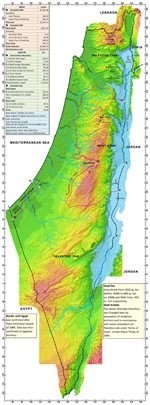 Slide-2
Slide-2
For six decades, Israel built into Western minds myths like Palestine is a land without people, that God gave Palestine to the Jews as the promised land, that Israel had to fight wars in self defense, that the refugees who were expelled from their homes have left of their own choice, that the refugees cannot practically return home. All these claims are entirely false and meant to mislead you.
Now, with the abundance of freely available information, the facts will enable you to see through this fog of misinformation. Then you will be able to make sense of the headlines in your newspaper today.
Therefore, now I am going to illustrate the facts of the long term conflict which led to Oslo fiasco and leave you to judge them. In one sentence, the conflict remains as it always was: uprooting of a people from their country, and replacing them with immigrants from many parts of the world.
Slide-2
This is my country. This is Palestine which Allenby found when he came to conquer it in 1917. It has a rich coastal plain; it has highly cultivated mountainous hinterland and has river Jordan and the Dead Sea. It is the home of Palestinians, they lived in more than a thousand towns and villages.
Allenby came to conquer Palestine at a time when European colonial projects in many parts of Asia and Africa were abandoned. At this very moment, Lord Balfour, the British foreign minister introduced a new colonial project under a new name. He betrayed the “Sacred Trust of Civilisation”, as stated in the Charter of the League of Nations regarding Palestine, to bring a democratic government and independence to the people of Palestine. Instead, he conspired with rich European Jews to facilitate their entry into Palestine. His Declaration is a false promissory note, given by a party which does not own to a second party which did not have title, without the knowledge or consent of the owner, the natural inhabitants of Palestine.
In its 30 years tenure, the British Mandate, which was supposed to bring Palestine to be an independent and free country, did the opposite; it allowed European Jewish immigration to Palestine. In spite of British collusion and Jewish wealth, Jewish immigrants were unable to acquire more than 7% of the county.
-
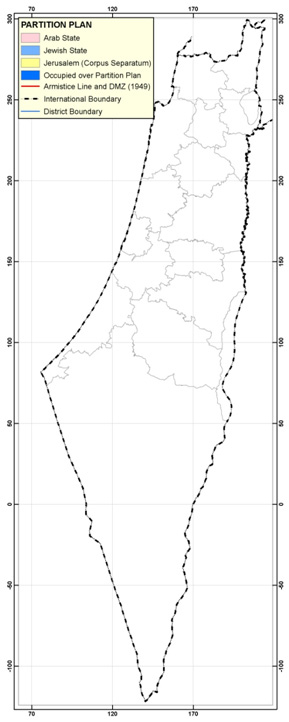 Slide-3A
Slide-3A
-
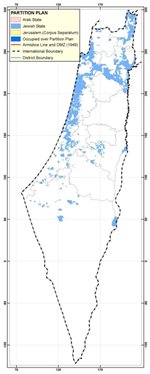 Slide-3B
Slide-3B
-
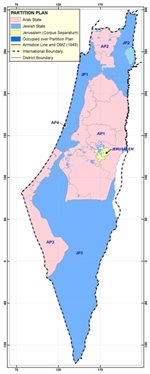 Slide-3C
Slide-3C
Slide-3 A, B, C
But the open immigration policy allowed them to grow to 30% of the population. At the end of the Mandate, Britain threw the case of Palestine into the lap of the United Nations, the successor to the League of Nations. The United Nations, through great pressure from the United States, voted narrowly to suggest a solution: that the European Jewish immigrants establish a government in 54% of the Palestine, without dispossessing any of the Palestinians who lived there, and that the Arab national majority in Palestine would be allocated less than half of the country. The Palestinians refused to give away more than half of their country.
But all that was overturned. In March 1948, the US changed its position and abandoned the partition scheme when it realized that this would bring endless wars to the region. The UN Security Council abandoned the partition proposal and established UN Trusteeship on Palestine. The Swedish Count Folke Bernadotte was appointed as UN mediator.
However the Zionist forces were already very well prepared to take over the country, many of its officers were veterans of WWII. Their 120,000-strong army attacked defenseless Palestinian villages. They conquered 78% of Palestine, and the inhabitants of 675 localities became homeless, to this day. I am one of them.
-
 Slide-4
Slide-4
-
 Slide-5
Slide-5
Slide-4
Let us now consider carefully a very critical period in the conflict which will shed light on al Nakba and explode many of the myths propagated by the Zionists.
In the six weeks, from early April 1948 to May 14, Zionist soldiers occupied 220 heavily populated villages and expelled their population, making up half of the total refugees today. That was while the British Mandate was there, supposedly to protect the population. That was before Israel was declared and before any Arab regular soldier set foot on Palestine’s soil to save the Palestinians.
-
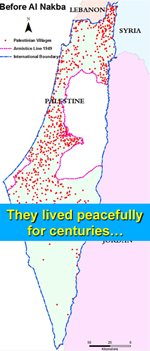 Slide-6A
Slide-6A
-
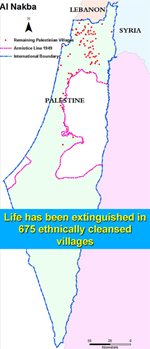 Slide-6B
Slide-6B
-
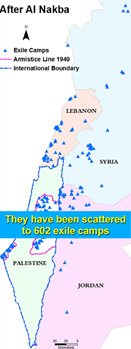 Slide-6C
Slide-6C
The red areas denote areas occupied by Zionist forces in this period. The blue dots are the depopulated villages. There is more to it than that.
The massacres became a weapon of ethnic cleansing. Deir Yassin is the well known infamous case. There were at least 3 dozen others after that. See the drop of blood marks. In every one of the 31 Zionist military operations to conquer Palestine, there were at least 2 massacres of village inhabitants. The advancing Zionist soldiers and the trail of blood they left behind created what I call “Spheres of Influence”, (black line circles) within which villages were depopulated due to this effect.
Slide-5
Evidently, Israel was not in self defence. It was attacking villages and expelling its people. Half of all refugees were expelled by Jewish terrorists at this time.
Slide-6 A, B, C
Here we have al Nakba.
Before al Nakba, Palestinians lived peacefully in over 1000 towns and villages. In al Nakba, Palestine was empted of its population. Where did the survivors go? They became refugees in the remainder of Palestine and the neighbouring Arab countries. This is the essence of the conflict. Everything else is detail. Without its remedy, there can be no peace in the region. That must be clearly understood.
-
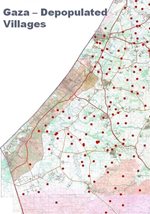 Slide-7A
Slide-7A
-
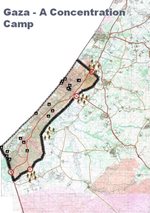 Slide-7B
Slide-7B
In 1967, Israel occupied the remaining 22% of Palestine, in the West bank and Gaza Strip, Sinai in Egypt and Golan in Syria.
Slide-7 A, B
Take the case of Gaza, for example. All these red dots you see are depopulated Palestinian villages, now they are crammed in Gaza Strip. Why is Gaza heavily crowded? because that is where people from 274 villages in southern Palestine were driven into 8 refugee camps.
Slide-8
They never had a peaceful moment in their exile in Gaza.
Slide-9, Oslo Hoax
Then, there comes Oslo. The big hoax, or in the words of a Harvard professor, “the brilliant deception”.
In signing Oslo Accord in Sept 1993, Yasser Arafat assumed that Israel shall at least evacuate the land it occupied in 1967 where he can establish a state in a Palestine that shrank to its fifth area, in a time frame of 5 years. When the five-year time limit passed without any results, the second Intifada erupted. Israel then destroyed all the built infrastructure for the new state and started building the Apartheid wall and building more and more settlements. This eventually led to the mysterious death of Yasser Arafat.
-
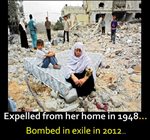 Slide-8
Slide-8
-
 Slide-9
Slide-9
Oslo was thought to be a new peaceful beginning, the remedy for the war crimes, a return of the refugees, a restoration of justice. But it turned out to be the reverse. To start with, Oslo Accord was created to be an agreement between the occupying power and the occupied people in order to manage and control the occupation, not to remove it. Article-47 of the Fourth Geneva Civilians Convention of 1949 implies that any agreement with the occupier that contains provisions that do not protect the rights of the occupied people is invalid.
Oslo Accord lacks the rudimentary elements of a normal contract. It had no legal reference. It does not refer to the international law or the UN resolutions regarding Palestine rights. It does not, even once, acknowledge the right of self-determination of the Palestinian People or the integrity of Palestinian territory, as was the case in similar negotiations, like the agreement signed between the United States and Vietnam. It does not create a mechanism for the implementation of the agreement or a penalty for its violation. It does not create an independent reference for conflict resolution such as the International Court of Justice. It does not create a military force of intervention to implement the agreement, as was the case in Bosnia, Kuwait and Iraq.
The worst element in the accord is that, while the whole world, including the US and the International Court of Justice, recognizes that the West Bank and Gaza Strip are occupied territory, this accord makes Israel, not their occupier, but a partner in the land it occupied, a partner with the Palestinians themselves.
Israel sees the situation almost like someone who pick pocketed a wallet in the street and, instead of giving it back to the owner who wanted it, he started negotiating with him over dividing the money in the wallet. Palestine is not ‘disputed’, it is occupied.
The fragmentation of the negotiations into five different issues such as borders, land, water, security and refugees is a manifestation of the fundamental fault of the Oslo Accord.
The Oslo Accord led to Israeli control of 60% of the West Bank and a further 25% under virtual control. In the end, the Israeli objective is to allocate eight percent of Palestine to 12 million Palestinians and 92% of Palestine to five and half million Jewish immigrants.
There is another particular irony. In 1941, the Nazi occupation forces in Paris signed an agreement with the collaborative Vichy government in France under the name of Paris Protocol. Fifty three years later, the Paris Economic Protocol was signed between Israel and Palestinian Authority to do roughly the same thing. As a result, the Palestinian economy was held captive; almost all of its exports and imports are tied to Israel to the extent of 94%. The unemployment rate has risen from 3.7% in 1992 before the Accord to over 30% today. Customs collected for Palestinian authority are often held as ransom to do Israel bidding.
It is not only economic. Article-49(6) of the Fourth Geneva Convention prohibits the transfer of part of the civilian population of the occupying power to the occupied territory. They are considered war criminals. The Rome Statute of 1998, which is the basis of the International Criminal Court, in Articles-7 and 8, has made the transfer of the people of the occupying power to the occupied land a war crime (Art 8-2bviii). Today, there are six hundred thousand Israeli settlers in the occupied West Bank, including Jerusalem. This is almost the same number of Jewish immigrants who arrived at the shores of Palestine under British protection before 1948 and they built Israel on the ruins of Palestine.
As the next slide shows, the occupation in the West Bank has many facets.
Slide-10 A, B, C, D, E
Look at what happens in the West Bank. Palestinians under Israeli occupation are besieged in 60 cantons, Confined to cantons in a tiny area, Captive villages. Apartheid wall. separated by 500 road blocks, 500 road blocks. Jews-only roads. robbed of their land and water by fanatic settlers. This is a Supreme Manifestation of Apartheid, not seen in South Africa.
Israel built the Apartheid Wall. As you know, the Apartheid Wall has been condemned by the whole world. It was condemned by the International Court of Justice, the highest court in the world. Its Advisory Opinion, given on the 9th of July 2004, stated that this Apartheid Wall is illegal, must be demolished and compensations must be paid to farmers who suffered as a result.
-
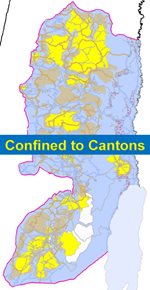 Slide-10A
Slide-10A
-
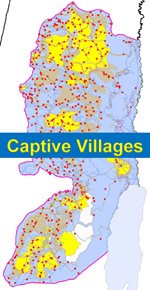 Slide-10B
Slide-10B
-
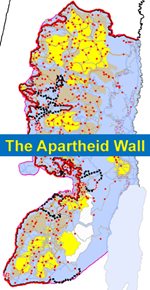 Slide-10C
Slide-10C
-
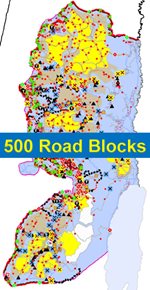 Slide-10D
Slide-10D
-
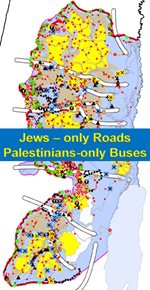 Slide-10E
Slide-10E
Slide-11
Arbitrary arrest, detention without trial and torture to death. This is the fate of most males and even children and women. From 1967 till today, 40% of all Palestinian males, including children, were jailed by Israel. By comparison, that would be 25 million Japanese taken prisoners.
Would any decent human being accept these evils? Of course not. But the Nakba still goes on.
When it comes to the fundamental issue of the century-old conflict, namely the Palestinian refugees’ Right of Return, Oslo Accord practically ignored it.
It is not surprising therefore that the first reaction to Oslo is that of the refugees themselves; they formed hundreds of Right of Return Committees everywhere they reside in exile. A notable critic of Oslo is the brilliant Palestinian professor Edward Said. He called it “an instrument of Palestinian surrender, a Palestinian Versailles”. In 1998, we, together with him and a thousand prominent Palestinians, signed a proclamation that the inalienable Right of Return cannot be diminished or compromised by any person, authority or state. In 2000, we held the first international conference in Boston on the sacredness of the Right of Return. This conference was followed by many others. The month of May each year became a regular event to commemorate al Nakba and to renew the struggle for the Right of Return. On May 15 last, a panel on al Nakba was held in the European Parliament in Brussels. Last September, three conferences were held in London alone showing the failure of Oslo Accord.
-
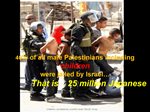 Slide-11
Slide-11
-
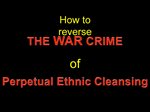 Slide-12
Slide-12
In 2001, a feeble attempt under Oslo Accord was mad in Taba to address the fundamental rights of the refugees. The Taba negotiations turned out to be another attempt at deception. Israelis said they were prepared to consider the return of the refugees through five options. One of them is the natural one, to their return to their homes in what is now Israel. Those few who would be allowed to return should be old enough to die shortly afterwards. If implemented, their total number is less than one percent of all refugees. For the other four options, the refugees were given the freedom to choose where they wish to be exiled away from Palestine. Israel wanted to make sure that the ethnic cleansing of 1948 is permanent.
It was proposed in Taba that the property of the exiled refugees and all Palestinian land, which is 93% of Israel’s area, would be given free to Israel and compensation for this huge real estate is to be paid, not by the party who stole it, but by the international community. Not surprisingly, these proposals were not accepted and Taba negotiations failed.
Slide-12
So what should we do?
Should we accept ethnic cleansing, expulsion, occupation, racism, apartheid? Of course not.
We should look for the remedy, for the salvation of the oppressed, for freedom of those colonized in their own homeland. We must restore justice. But how?
We must let the refugees return to their homes.
The international community has already determined the right path to take. UN resolution 194, passed in December 1948, called for the return of the refugees and affirmed 135 times, longer and more consistently than ANY resolution in UN history. Israel did not comply. On the contrary, it occupied more land and expelled more refugees. It could do so with the blind support of USA and some European countries.
But the world is changing. World public opinion is gaining more strength. You here in this conference are a proof that you are concerned.
Can we devise a return plan that can satisfy justice and cause minimum disruption to existing conditions? Yes we can.
First we have to know where the refugees are today and where they should return to.
-
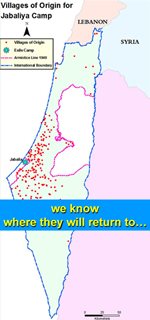 Slide-13A
Slide-13A
-
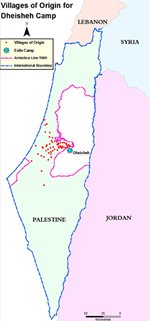 Slide-13B
Slide-13B
-
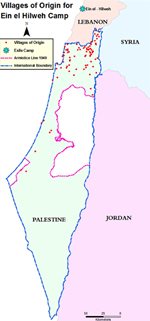 Slide-13C
Slide-13C
Slide-13 A, B, C
We know where the refugees in any camp come from originally. This is Jabaliya camp in Gaza Strip and the red dots are the villages where they come from. This is Dehaisha camp, just south of Jerusalem. This is Ein El Hilweh camp in Lebanon.
Can we get them back? There are lots of Israelis who say: no, you cannot let them back, because the country is already full. They are replaced by immigrants from all around the world. This is not a justification if it is true. But it is not true. We made an analysis of 46 natural regions in Israel and we found that 84% of the Israeli Jews live in only 17% of Israel. This is not all. We analyzed all the municipal boundaries created by Israel and found out how many Israeli Jews live there now and how many Palestinians expelled from there and have the right to return to their homes in these areas.
Slide-14
Here are the municipal boundaries where more than 50,000 [57,123] Jews live.
(Area 852 km2, 4% of Israel’s area, pop 3.4m out of 5.5m Jews, 20 MB out of 429.)
-
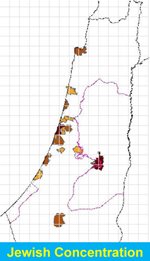 Slide-14
Slide-14
-
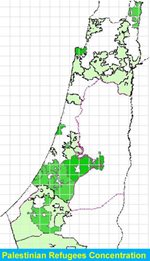 Slide-15
Slide-15
-
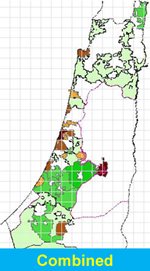 Slide-16
Slide-16
Slide-15
And here are the same municipal boundaries where more than 30,000 [31,033] Palestinians were living and can return to.
(Area 10,244 km2, 50% of Israel’s area, pop 3.6m out of 4.43m RERE (81%), 42 MB out of 429).
Slide-16
And here they are combined. You see that refugees can return without any hardships to the Jewish immigrants. All can live in peace, provided that racism and apartheid and occupation are totally banned.
Slide-17 A, B, C, D, E
Let me give another example in greater detail for the area from Tel Aviv-Jerusalem corridor down south to Gaza. The red dots are the depopulated villages. The blue line is the partition plan. What happened when those villages were depopulated? The Israelis built the blue areas instead. As you can see, most of the village sites are still vacant.
Who took them over?
The Jewish National fund took over this stolen property and built Qibbutzim on them. Remember, the Jewish National Fund is the one that organizes Gala dinners, with men in Tuxedos and bejeweled women in evening dresses, collecting tax-exempt funds for stolen property to be used by immigrants. Qibbutzim population, holding refugee land, is less than 2%. In the area shown, there are probably no more Jews than fill one refugee camp.
So what did Israel do with this whole area? They used it for military purposes. All these are the military or strategic points and the yellow area are military areas, totally taken over by the army. So, 83% of Israel is taken over partly by 2% Israeli Jews and the larger part by the Israeli army, which controls about ¾ of the land in Israel. Israel is a huge military base, the largest in one place from Paris to Tokyo.
If the war mongering in Israel is terminated, we still can re build the Palestinian villages back in their original place. With the abolition of the war and the restoration of justice, we do not need Israel’s war machine.
-
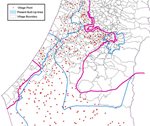 Slide-17A
Slide-17A
-
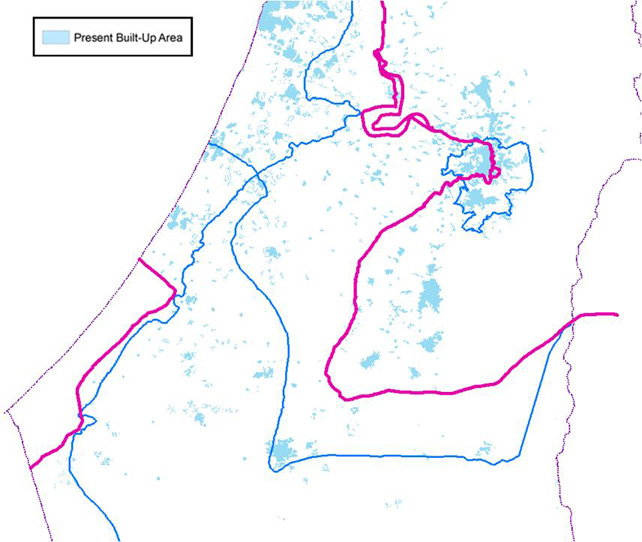 Slide-17B
Slide-17B
-
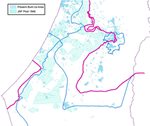 Slide-17C
Slide-17C
-
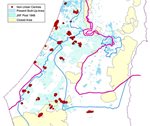 Slide-17D
Slide-17D
-
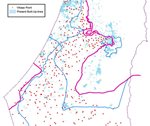 Slide-17E
Slide-17E
Slide-18 A, B
Let me give you another example, in the Southern District. With the exception of 3 Palestinian towns which are expanded, namely Beer Sheba, al Majdal, and Isdud, there are very few Jews living there in Qibbutz, each Qibbutz has only 300 people. When the Palestinian refugees in Gaza return, they will return to their almost empty land.
-
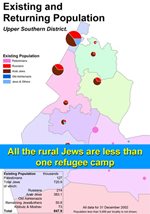 Slide-18A
Slide-18A
-
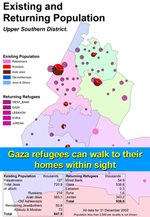 Slide-18B
Slide-18B
That is why Israel is determined to fill this land by Jewish settlers by enforcing the new racist law, known as Prawer Plan. This law when implemented will expel 70,000 Palestinians from 35 villages in Beer Sheba district in which they lived long before the European settlers came from Europe to take over their land. Those Palestinians are Israeli citizens. They now suffer a new Nakba. Demonstrations were held this year in many cities in the world against the racist Prawer Plan. The European Parliament condemned it. More public protest is expected.
Slide-19
Here we have a plan to rebuild the destroyed villages. We divided occupied Palestine into 10 regions, each region represents a special village design because of available building materials, terrain, weather and so on. We created a massive file on each village.
Slide-20
Here is an example of a destroyed and depopulated village, Beit Jirja, just north of Gaza Strip. Here is how it looked in 1945. We identified the owners of each house, in green squares and we know their names, we know where they live today and we can arrange their return in probably a week.
-
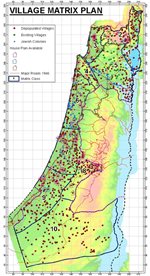 Slide-19
Slide-19
-
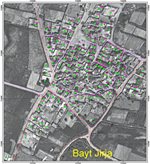 Slide-20
Slide-20
-
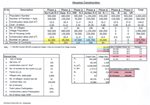 Slide-21
Slide-21
Slide-21
We studied the construction of these villages. We need only one or one and half million dwelling units, which is not a big deal. Palestinians have built these kinds of projects and bigger in the Gulf and Saudi Arabia. The villages can easily be rebuilt by the hands of the Palestinians themselves, as labourers, engineers, managers, and developers. It is very instructive to note that the cost of reconstruction of villages and repatriation of refugees is a tiny percentage of the perennial cost of Israel to the US economy, without counting the cost of wars, military and political losses.
Return is much cheaper than compensation. Return is much cheaper that international aid. Return is certainly much cheaper than wars.
Slide-22
So from all this we come to the question:
as we realize that Oslo was a failure,
as we conclude therefore that Oslo will never adeuately address the main element of the conflict, namely the return of the refugees,
as the UN reaffirmed the Right of Return 135 times,
-
 Slide-22
Slide-22
-
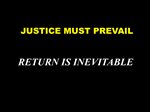 Slide-23
Slide-23
as we have no problem in implementing the return from logistic, legal, population, land, property, economics, geography or history,
and as we know the whole world supports the return, with the exception of Israel and United States,
then the obvious question is:
Why did not the palestinian refugees return?
They did return in Bosnia, Herzegovina, Kosovo, Abkhazia, Uganda, Iraq, Kuwait, but not in Palestine?
The reason is: Israel’s Zionist racist laws and practices. They must be abolished. International law must be applied. I believe this will come, if you all insist on it for the sake of peace in the world. Ladies and gentlemen.
There are three indisputable facts:
Fact one: the Palestinians today are in Palestine and around it, either living under Israeli occupation or living in exile because of it. They will not go away or disappear.
Fact two: There is no resolution in UN history more sustained and more reaffirmed than the Right of Return of the expelled Palestinians to their homes.
Fact three: Israel is a colonial racist regime, the only one in the world today. It is only propped up by military force. No such colonial regime can last forever.
Slide-23
Justice must be done, must be done. It is the only road to permanent peace. Let us take that road and bring justice to millions of people sooner than later.
Thank you.